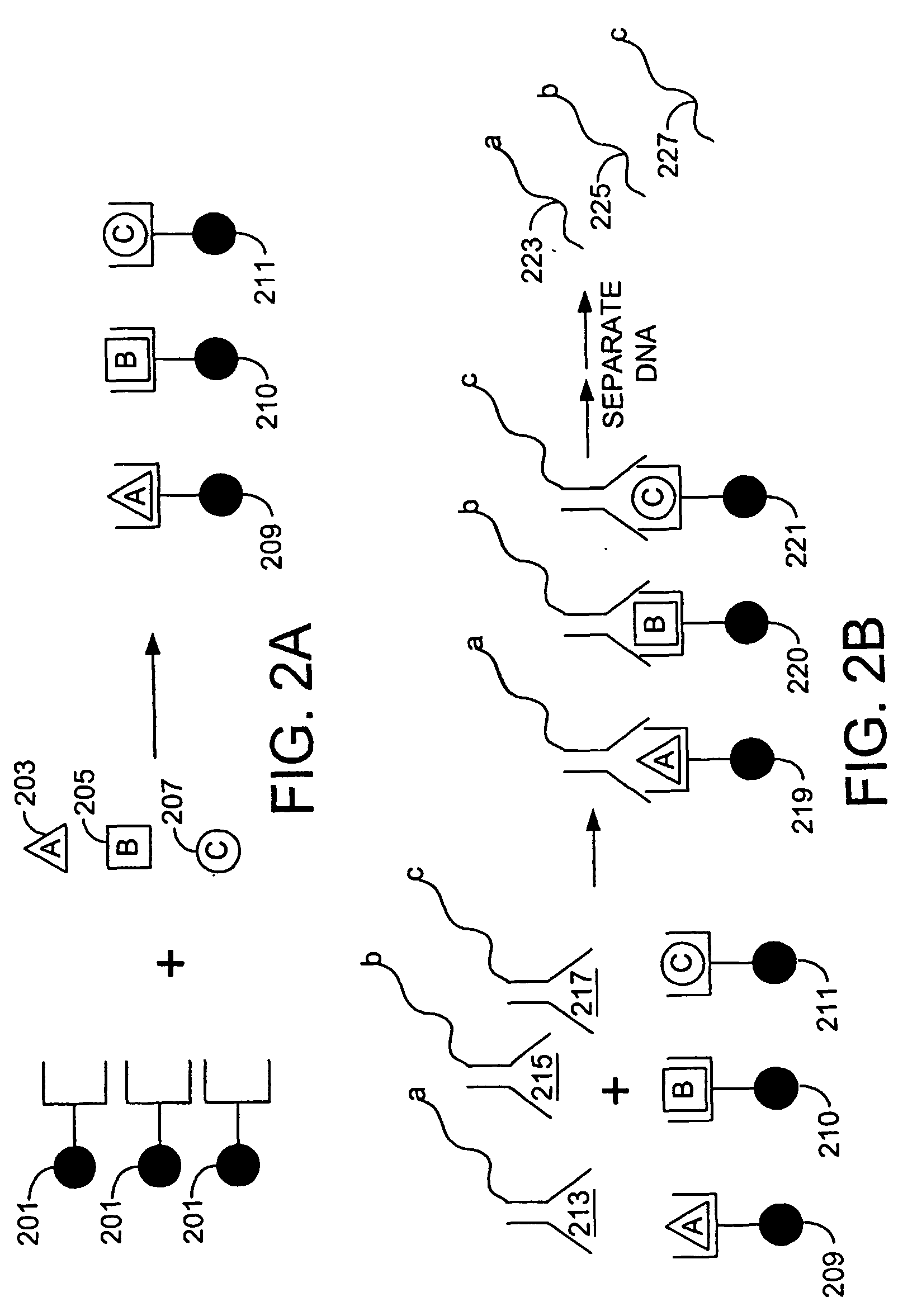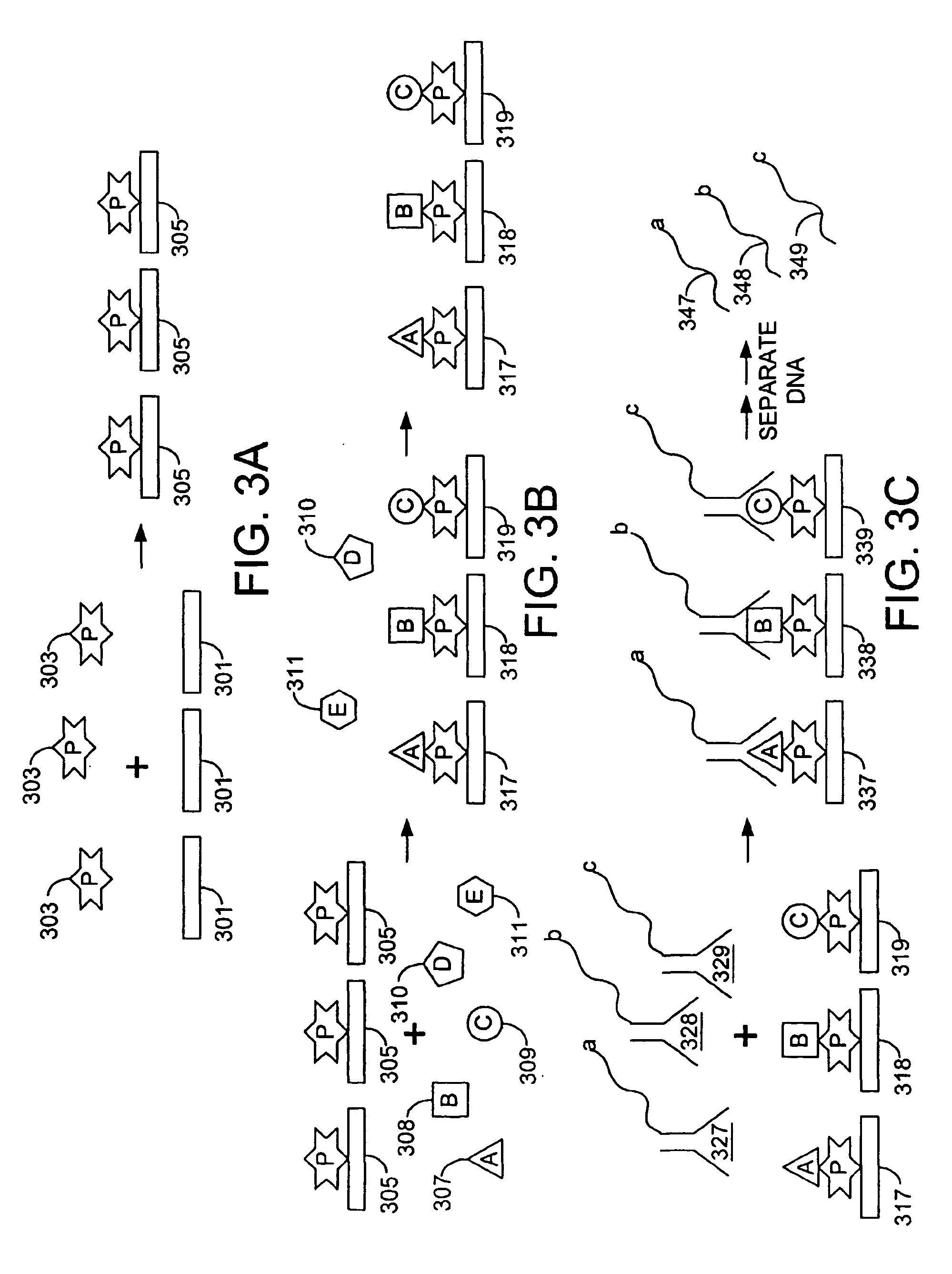Array systems and methods
- Summary
- Abstract
- Description
- Claims
- Application Information
AI Technical Summary
Benefits of technology
Problems solved by technology
Method used
Image
Examples
embodiment
[0036] Embodiment A
[0037] An embodiment of the immuno-DNA array method / system is capable of assessing the presence of one or more proteins in a solution. The immuno-DNA array system / method can be used in a kit or biosensor. In general, the immuno-DNA array system / method includes conjugating the proteins of interest to a solid support and then contacting the solid support to a DNA-conjugated antibody solution having multiple DNA-conjugated antibody types. The DNA bound to each DNA-conjugated antibody type is unique for each DNA-conjugate antibody type. In addition, each type of DNA-conjugate antibody has an affinity for a particular protein. Consequently, each DNA-conjugated antibody type binds to a corresponding protein on the surface of the solid support.
[0038] Thereafter, the protein may be removed from the solid support and the DNA released from the DNA-conjugated antibody. The DNA is separated from the solution, amplified, and detected. The detection of a type of DNA indicates ...
embodiment b
[0053] Embodiment B
[0054]FIGS. 2A and 2B are schematic diagrams that illustrate another representative embodiment of the immuno-DNA assay method / system. The immuno-DNA array system can be used in a kit or biosensor. This embodiment includes multiple solid substrates 201 for the specified proteins 203, 205, and 207 to conjugate with, rather than one solid substrate as shown in FIGS. 1A-1B. FIG. 2A is a schematic that illustrates contacting multiple solid supports 201 with a solution of proteins that includes specified proteins 203, 205, and 207. Specified proteins 203, 205, and 207 conjugate with the solid supports 201 forming multiple protein-conjugated solid supports 209, 210, and 211. The solid support 201 can be any solid support that has an affinity for the specified proteins of interest and these include, for example, magnetic beads, agarose, membranes, and sepharose. The solution of proteins is similar to the solution described in relation to FIGS. 1A and 1B.
[0055]FIG. 2B is ...
embodiment c
[0056] Embodiment C
[0057] In addition to identifying and quantifying specified proteins in a solution, the embodiments of the immuno-DNA array method / system can assess protein-protein interaction. The immuno-DNA array system can be used in a kit or biosensor. In this embodiment the immuno-DNA array system / method includes conjugating a first protein to a solid support forming protein-conjugated solid supports. Then the protein-conjugated solid support, is contacted with a protein solution having specified proteins. The specified proteins bind to the first protein forming protein-protein-conjugated solid supports. The protein-protein-conjugated solid supports are contacted with a DNA-conjugated antibody solution having multiple DNA-conjugated antibody types. The DNA bound to each DNA-conjugated antibody type is unique to that DNA-conjugate antibody type. Each type of DNA-conjugated antibody has an affinity for a particular specified protein. Consequently, each DNA-conjugated antibody ...
PUM
| Property | Measurement | Unit |
|---|---|---|
| Interaction | aaaaa | aaaaa |
Abstract
Description
Claims
Application Information
 Login to View More
Login to View More - R&D
- Intellectual Property
- Life Sciences
- Materials
- Tech Scout
- Unparalleled Data Quality
- Higher Quality Content
- 60% Fewer Hallucinations
Browse by: Latest US Patents, China's latest patents, Technical Efficacy Thesaurus, Application Domain, Technology Topic, Popular Technical Reports.
© 2025 PatSnap. All rights reserved.Legal|Privacy policy|Modern Slavery Act Transparency Statement|Sitemap|About US| Contact US: help@patsnap.com



